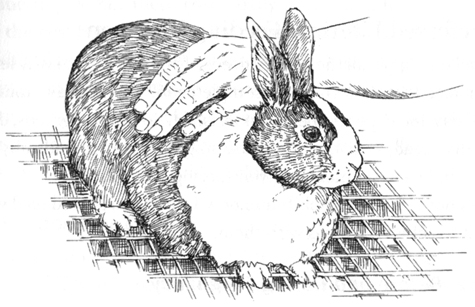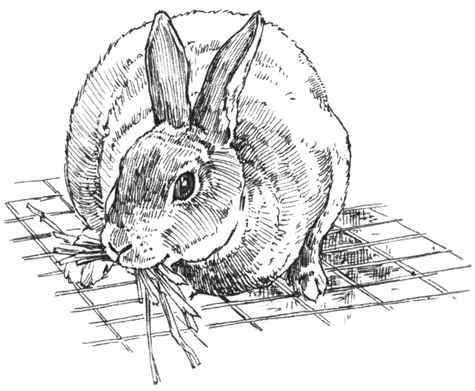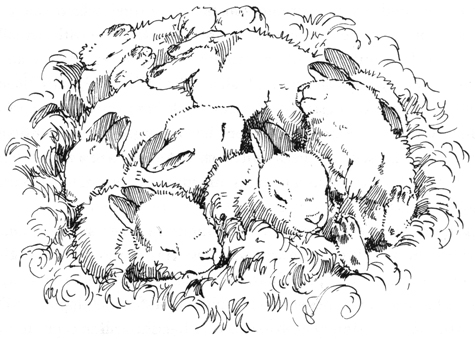Storey’s Guide to Raising Rabbits

Rabbit bible
For nearly 40 years this guide has introduced boy scouts, 4H-ers, homesteaders, survivalists, and pet keepers to the practicalities of raising rabbits. Now in a new 4th edition, it’s still the best manual for getting started with rabbits for food or show.
08/30/13Excerpt
Watch carefully at feeding time
A good raiser watches stock closely at feeding time. While they are eating, run your hand over each rabbit. A rabbit that's a bit bony should get more feed. If a rabbit hasn't cleaned up its pellets something is wrong.
To determine the cause of appetite loss, first check the water supply. Is the crock or jug empty? Is the valve plugged? Rabbits don't eat when they are thirsty. They must have plenty of water. Most of the time a rabbit that isn't eating isn't drinking.
If you run your hand over each rabbit at feeding time, you will know if you should increase the ration or not.
*
If the doe starts to carry straw around, she probably will kindle in a day or so.
*
The doe needs peace and quiet a few days before the litter is born and a few days after. Dogs and children can be particularly disturbing at this time. Upsetting the rabbitry routine can cause the doe to kill her young or abandoned them, so it it is vital that you keep things calm and quiet.
You will, of course, be very curious to see the litter. If you have placed the nest box in the back of the hutch but in full view from the front, you will be able to see into it, and by the 31st day you should see a pile of fluffy fur toward the rear of it, moving slightly up and down.
Ten-day old babies in the nest. Newborns should be handled rarely if at all, so the doe will not be upset by the intrusion in her nest and so you avoid passing your sent to the young.
Storey's Guide to Raising Rabbits Bob Bennett 2009, 256 pages $15












